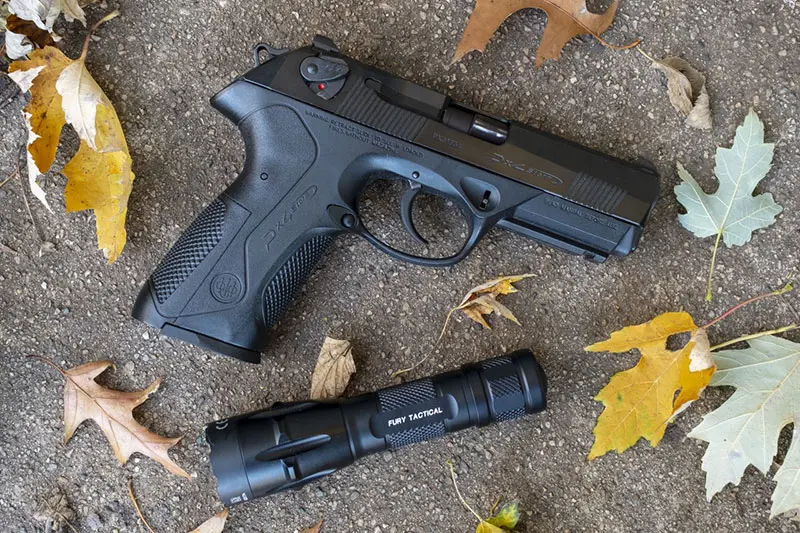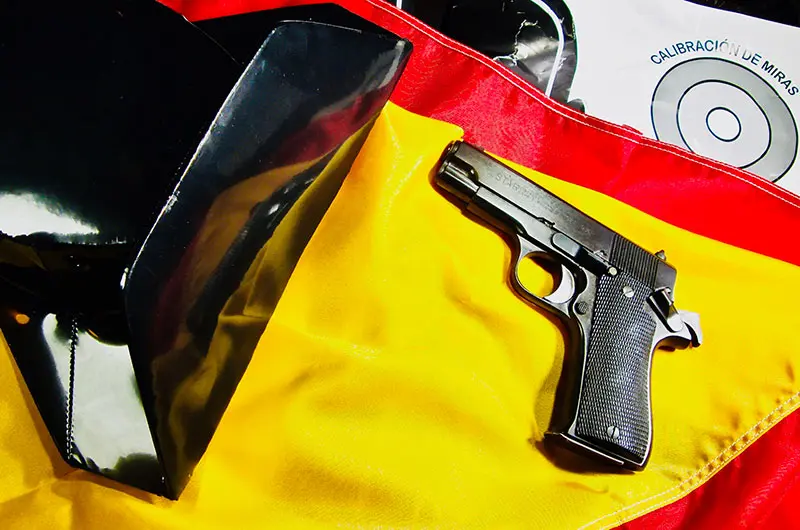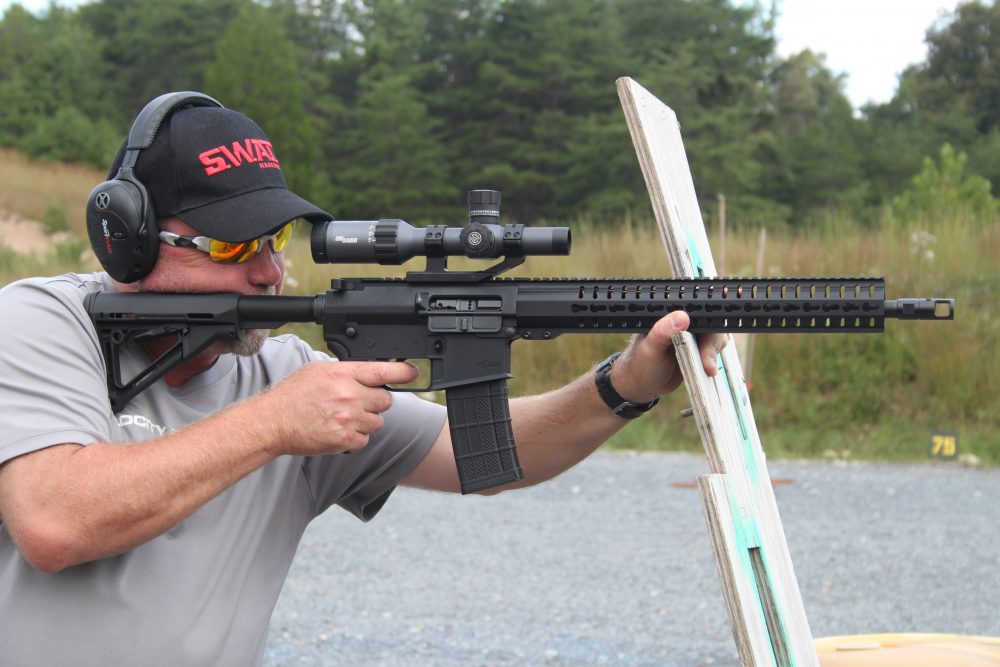
What comes to mind when someone mentions getting an AR-pattern rifle for personal defense, law enforcement, or even hunting? I’ll bet most would first consider it chambered in 5.56mm/.223 Rem.
CMMG decided to up the ante with the AR platform by not being confined to the 5.56mm chambering. CMMG features AR models chambered in 7.62x51mm/.308 Winchester, 9mm, .300 BLK, .22 LR, 7.62x39mm, and most recently .458 SOCOM in the form of the CMMG MkW ANVIL.
Table of Contents
.458 SOCOM
The .458 SOCOM emerged from what started as informal discussions within the U.S. Special Operations community after involvement in Somalia. Initial requirements were set forth that shaped the design of the .458 SOCOM. The cartridge needed to fit in standard AR-15 5.56mm magazines. Another important criteria was the ability to fire subsonic rounds to facilitate suppressor use.
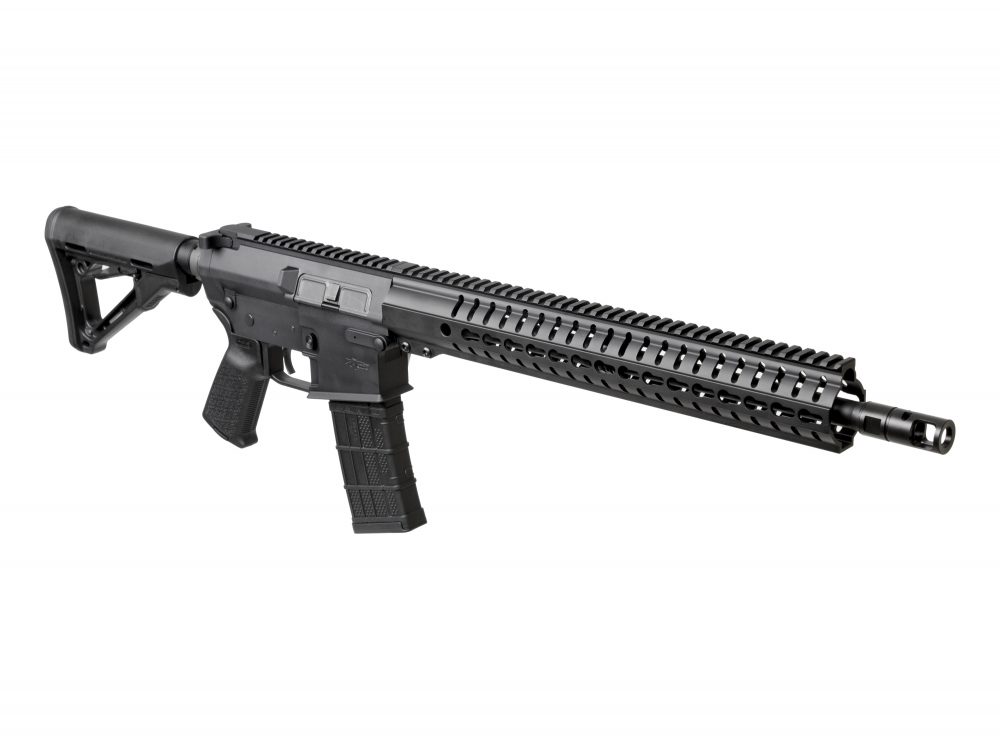
Marty ter Weeme brought forth the .458 SOCOM cartridge in 2000 with Tony Rumore of Tromix building the first .458 SOCOM chambered rifle in February 2001. The .458 SOCOM is based on a lengthened .50 AE case that is then necked down to .458. The cartridge utilizes a rebated rim size similar to a .308 Winchester.
Upon testing, it was found that the .458 SOCOM not only lived up to the initial functionality requirements, but also demonstrated ballistics that made it a viable caliber for a multitude of roles.
A surprising variety of .458 SOCOM ammunition is available, from companies such as Corbon, Lehigh, Southern Ballistic Research (SBR), Underwood, Black Butterfly, Polycase, and Venture Munitions. Bullet weights span from 140 to 600 grains. The SBR-loaded Polycase 140-grain ARX reaches nearly 3,000 feet-per-second (fps), 300-grain loads 1,800+ fps, 400-grain 1,600+ fps and 500- to 600-grain 950 to 1,200 fps. For comparison, think .45-70 Government power in a semi auto when using 300- to 400-grain bullets.
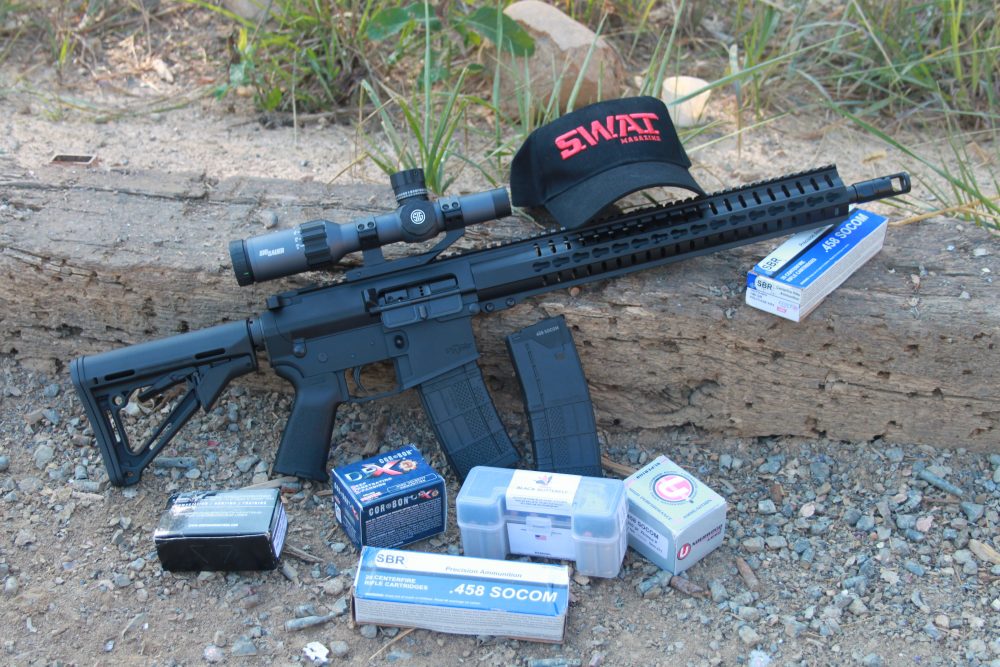
Research indicates that the 300- to 400-grain loads are the sweet spot for the caliber, with the most bullet load options. The 500- to 600-grain rounds are for suppressor use.
The .458 SOCOM was specifically designed to generate unprecedented stopping power at short to moderate ranges out of the AR. For 300- to 350-grain .458 SOCOM loads, a 150-yard zero will give a relatively flat trajectory out to 200 yards. A 150-yard zero will have the bullet offset less than one inch low at 50 yards, +2.5 inches at 100 yards, and dropping seven inches at 200 yards.
The .458 SOCOM’s heavy, large-diameter bullets and moderate velocities make it well-suited for use in multiple arenas, such as urban/CQB environments, law enforcement, hunting, and personal defense. Shorter range is a shared characteristic of each of the listed roles. The .458 SOCOM’s terminal ballistics and large projectile have equal effect on engine block or large hog, assailants with body armor or penetrating front windshields. It passes through automotive body panels easily.

THE ANVIL
The urge to merge AR modularity, ergonomics, optics, and accuracy with a heavier than 5.56mm cartridge has constantly appealed to the shooting community.
The CMMG MkW ANVIL’s upper and lower receivers are created from 7075-T6 billet aluminum. The ANVIL’s upper is an M4 flat-top style transitioning into a similar rail along the top of the CMMG RKM forend rail. The CMMG ANVIL’s upper receiver is equipped with a case deflector as well as an ejection-port dust cover.
The MkW’s receiver and bolt group are derived from CMMG’s Mk 3 series of 7.62x51mm/.308 Win rifles. CMMG describes the MkW as a mid-sized AR receiver (3/4 inch shorter than an AR-10) and views its adaptation from the larger AR-10 receiver/bolt group an important component of the MkW ANVIL’s reliability and durability.
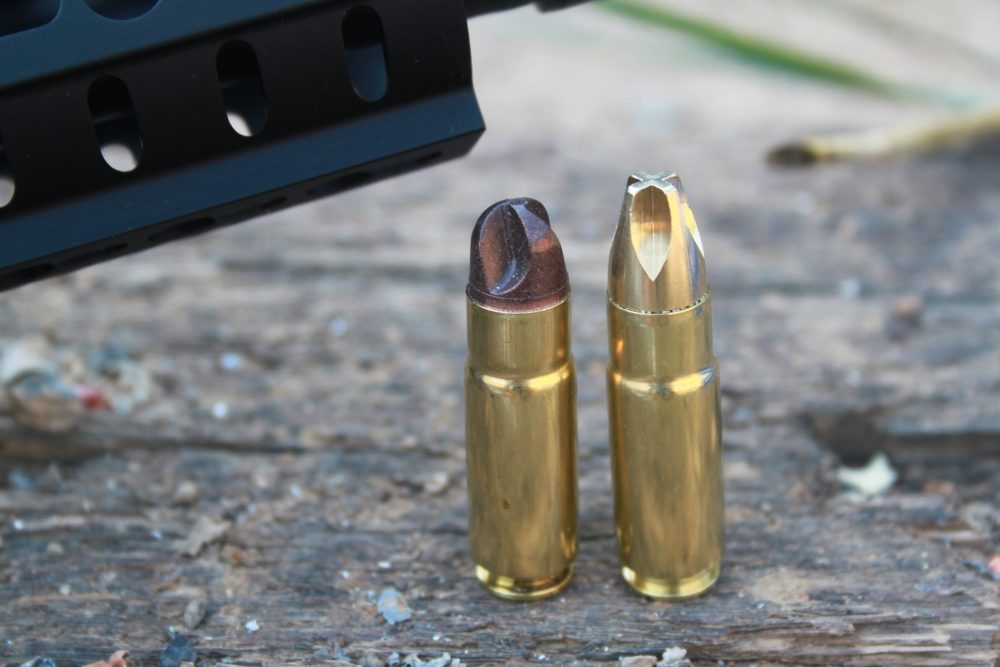
In lieu of trying to force an AR-15 receiver into utilizing the .458 SOCOM cartridge, which is done with some other .458 SOCOM rifle offerings, CMMG decided to go with a slightly scaled-down AR-10 receiver to ensure the MkW ANVIL can handle the power of the round without concern. CMMG was able to do this while still minimizing the MkW ANVIL’s weight at 7.5 pounds.
With this said, an AR-15 type trigger group, pistol grip, and rear stock are utilized so users can still access plentiful aftermarket options if desired. Iron sights are not included with the CMMG ANVIL. This is just as well, since it gives the end user the opportunity to install their own choice of BUIS (Back Up Iron Sights).
CMMG is offering three models of the ANVIL, using different furniture and triggers. MSRPs range from $1,850 to $1,950 and $2,150. The MkW ANVIL evaluated for this article is the middle one: the MkW-15 XBE.
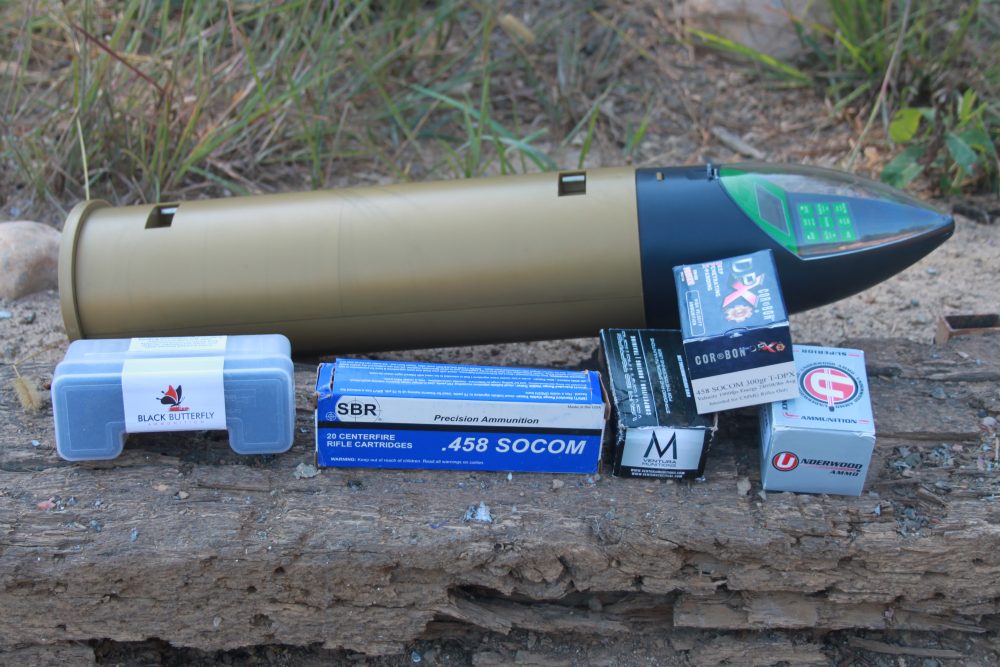
MkW-15 XBE SPECS
It features a Magpul MOE pistol grip and CTR adjustable buttstock. The 16-inch 1:14 twist barrel wears a CMMG SV brake. A single-stage milspec trigger provides a six- to eight-pound pull. An SLR Rifleworks Sentry 7 adjustable gas block is used with the direct-impingement MkW ANVIL. This allows users to adjust the amount of gas siphoned off to operate the bolt group, especially if suppressor use is contemplated. This is a nod to the variety of .458 SOCOM ammunition available for use.
The minimalist CMMG RKM KeyMod rail design, measuring 15 inches, defines the CMMG MkW ANVIL’s aesthetics. The CMMG RKM KeyMod rail system permits the barrel to be free floated, and shows versatility in satisfying customer needs by not using full-length Picatinny quad rails, but instead a lower profile handguard with adjustable KeyMod Picatinny rail sections. Short KeyMod sections of rail can be added as desired to numerous positions around the handguard, removed, or more sections added, depending upon the user’s preference.
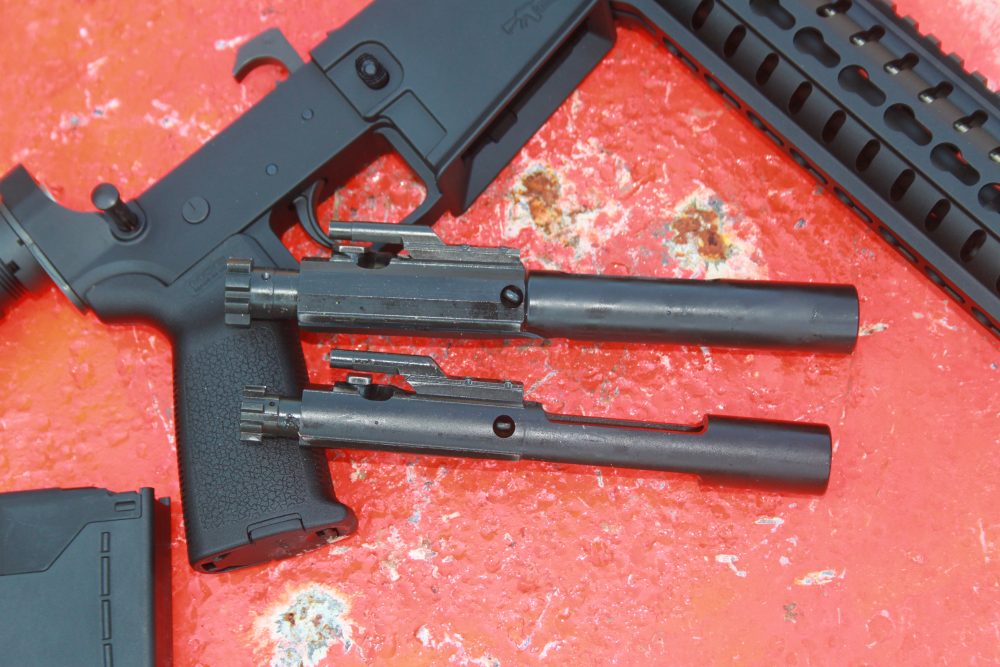
The MkW ANVIL’s larger than typical AR-15 receivers offer plenty of support for the modified AR-10 style bolt group used. The larger and heavier bolt carrier offers added benefits in terms of reliability as well as its greater bolt momentum. CMMG labels the modified AR-10-type bolt carrier group used in the ANVIL as their Powerbolt design.
The “overbuilt” MkW ANVIL’s Powerbolt and receivers allow for the stoutest of .458 SOCOM to be used without concern of affecting the long- term durability of the rifle. The ANVIL arrived with dedicated .458 SOCOM Lancer L5 AR magazines with feed lips opened to better accommodate the .458 SOCOM cartridge. While the .458 SOCOM can be fed from standard AR magazines, they need to be proofed for reliability. The rounds load in a single-stack configuration with ten-round capacity.

SIG SAUER TANGO 6 OPTIC
It was decided to take full advantage of the MkW ANVIL’s flat-top upper receiver by mounting the recently introduced SIG Sauer Tango 6 1-6X24mm optic. The flat-top receiver’s Picatinny rail allows for one of the sturdiest and most versatile scope-to-rifle connections on the market. Proper scope positioning for optimal eye relief is made easier as well.
Others may choose to go with a red dot optic in a strictly CQB role. To my way of thinking, this limits what the CMMG MkW ANVIL rifle offers in terms of power and effective range. The Tango 6 has a 1X illuminated reticle setting for quick target acquisition at close range with both eyes open. A quick turn of the knob to 6X enables longer precision shots.
The SIG Tango 6 is loaded with high-end features such as adjustable illuminated MOA reticle, extra-low dispersion glass combined with high transmittance glass for outstanding light transmission and clarity, along with resettable lockable and zero stop turrets. SIG Sauer offers various power ranges and options in the Tango 6 model lineup, including different reticle styles, MRAD or MOA turret adjustments, and first or second focal plane.

AMMUNITION TESTED
Ammunition tested with the CMMG ANVIL consisted of a variety of loads: SBR Polycase 140-grain Inceptor, Underwood 300-grain Extreme, SBR 350-grain FMJ and 300-grain Solid Brass, Black Butterfly 300-grain Nosler Ballistic Tip, Ventura Tactical 300-grain Controlled Fracture, and Corbon 300-grain T-DPX.
From this sample size, it is obvious that a number of manufacturers are producing ammunition for the .458 SOCOM. While ammunition is not cheap, a user is secure knowing it is available. Handloading is another option.
The CMMG MkW ANVIL kept all loads tested under 2.25 inches at 100 yards. The accuracy level was overall more than acceptable considering the roles envisioned for the ANVIL. Accuracy test protocol consisted of three-shot groups with each ammunition type. Group sizes were averaged.
The flexibility of the SIG Sauer Tango 6’s magnification range was appreciated when exploring the different ammunition loads.
The real eye opener for me was the 140-grain Polycase ARX load. Here is a round that offers something out of the ordinary for the .458 SOCOM, giving ballistics similar to a .308 Winchester versus the rainbow trajectories associated with the heavier bullets. The heavy loads perform as expected, like heavy-hitting hammers that typify the .458 caliber. The 140-grain Polycase ARX offers more refinement in terms of external ballistics that defy what is expected from the short, stout .458 SOCOM round.
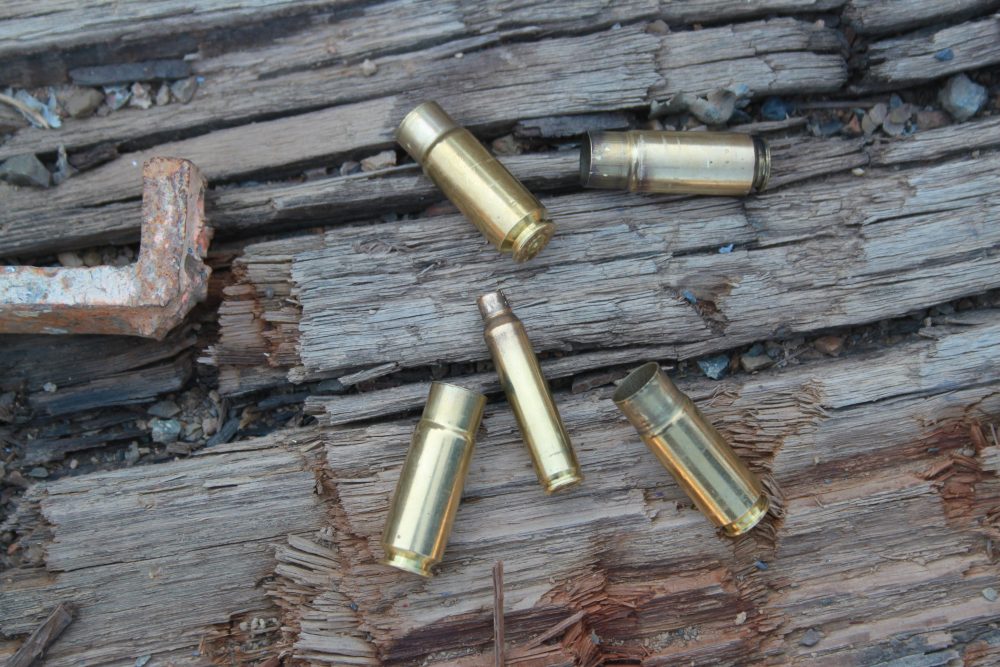
IS THE .458 ROUND TOO LIGHT?
I will admit skepticism when it came to the lighter load. How could such a light round be stabilized from the same barrel that was originally meant to fire bullets weighing three times as much? Whatever the science is, it works with the Polycase 140-grain ARX rounds. Accuracy was in the one-inch range at 100 yards! Needless to say, this alleviated my concern.
Steel popper targets were routinely hit out to 300 yards with minimal holdover required. Nothing at all like what would be associated with 300- or 350-grain rounds moving between 1,600 and 1,800 fps.
The .458 SOCOM ANVIL proved devastating against fluid-drained range vehicles located at Echo Valley Training Center’s (EVTC) stepped berms. The .458 SOCOM loads tested had no issue penetrating windshield or car bodies to engage steel popper targets located inside. This is the type of scenario and barrier penetration capability that the .458 SOCOM was designed for.
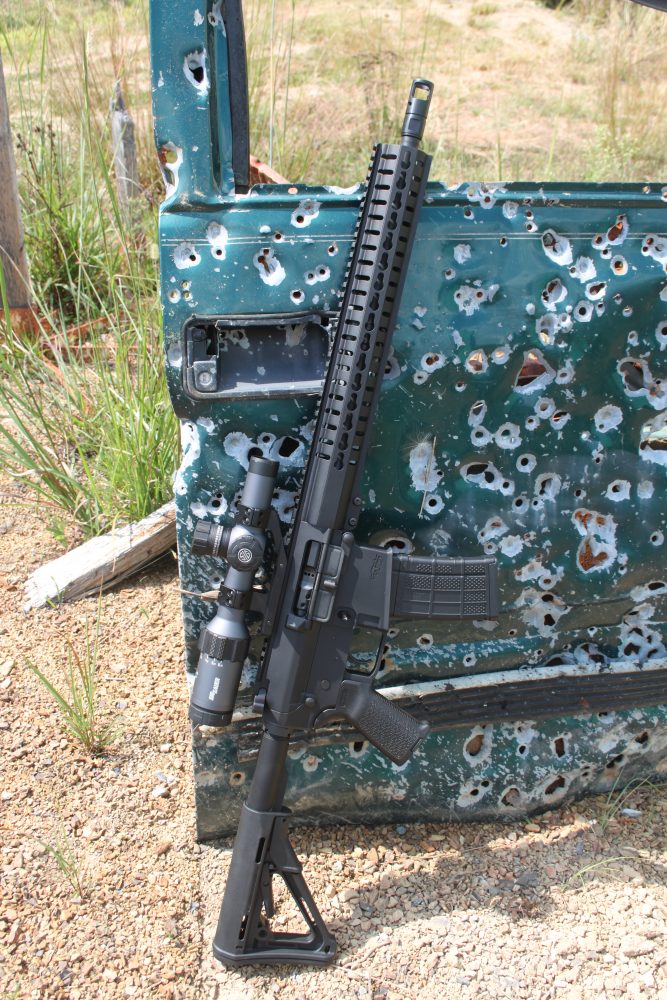
Further range testing consisted of dumping a ten-round magazine at several targets in rapid fashion. The steel targets were rocked with a satisfying “smack” when hit. The CMMG muzzle brake does a good job taming recoil. CMMG MkW ANVIL recoil was not prohibitive, with accurate rapid shots possible. Unscientific subjective comparison would have it placed in the 20-gauge shotgun category when firing 300- or 350-grain loads.
The inherent familiarity most have with the AR platform, not to mention its ergonomics, validates CMMG’s decision to continue to enhance it via caliber expansion. There are many situations in which the penetration and power of a 300-grain plus .458 bullet fired from an AR-type weapon could be very advantageous. The .223 is notorious for exhibiting poor penetration of automobile glass and other obstacles. The .458 SOCOM chambered CMMG ANVIL can easily penetrate barricade material and still engage targets with power to spare. In many law enforcement situations, the standard-issue handgun or shotgun lacks the power and accuracy to do the job. The same can be said for personal defense or hunting situations.
GO GET ONE
In designing and building the ANVIL, CMMG has taken a proven weapons system and made it better. The CMMG MkW ANVIL places real power in a compact, accurate, and reliable package. The ability to reliably engage targets out to 150 yards with great terminal effect cannot be underestimated. This range is doubled when choosing to go with the 140-grain Polycase ARX rounds.
The CMMG MkW ANVIL is a rifle that will interest many, due to CMMG’s reputation plus the resurgent popularity of the .458 SOCOM cartridge.
With quality optic mounted and using premium ammunition, the MkW ANVIL is a prime candidate for use as a general-purpose rifle, especially when factoring in the varied ammunition that is available.
SOURCES
CMMG
(660) 248-2293
www.cmmginc.com
ECHO VALLEY TRAINING CENTER
(540) 450-7998
www.echovalleytrainingcenter.com

